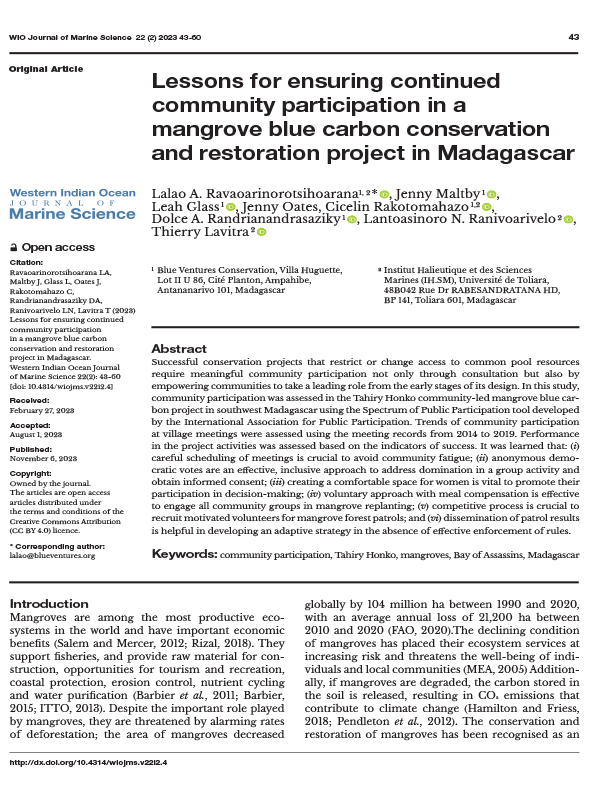Successful conservation projects that restrict or change access to common pool resources require meaningful community participation not only through consultation but also by empowering communities to take a leading role from the early stages of its design. In this study, community participation was assessed in the Tahiry Honko community-led mangrove blue carbon project in southwest Madagascar using the Spectrum of Public Participation tool developed by the International Association for Public Participation. Trends of community participation at village meetings were assessed using the meeting records from 2014 to 2019. Performance in the project activities was assessed based on the indicators of success. It was learned that: (i) careful scheduling of meetings is crucial to avoid community fatigue; (ii) anonymous democratic votes are an effective, inclusive approach to address domination in a group activity and obtain informed consent; (iii) creating a comfortable space for women is vital to promote their participation in decision-making; (iv) voluntary approach with meal compensation is effective to engage all community groups in mangrove replanting; (v) competitive process is crucial to recruit motivated volunteers for mangrove forest patrols; and (vi) dissemination of patrol results is helpful in developing an adaptive strategy in the absence of effective enforcement of rules.
Publications
Lessons for ensuring continued community participation in a mangrove blue carbon conservation and restoration project in Madagascar

Publication type
Publication year
2023
Download size
<1mb
Citation
Ravaoarinorotsihoarana LA, Maltby J, Glass L, Oates J, Rakotomahazo C, Randrianandrasaziky DA, Ranivoarivelo LN, Lavitra T (2023) Lessons for ensuring continued community participation in a mangrove blue carbon conservation and restoration project in Madagascar. Western Indian Ocean Journal of Marine Science 22(2): 43-60 [doi: 10.4314/wiojms.v22i2.4]
Share this:
Facebook
Twitter
LinkedIn
WhatsApp
Email
Related publications
Join a global movement
















